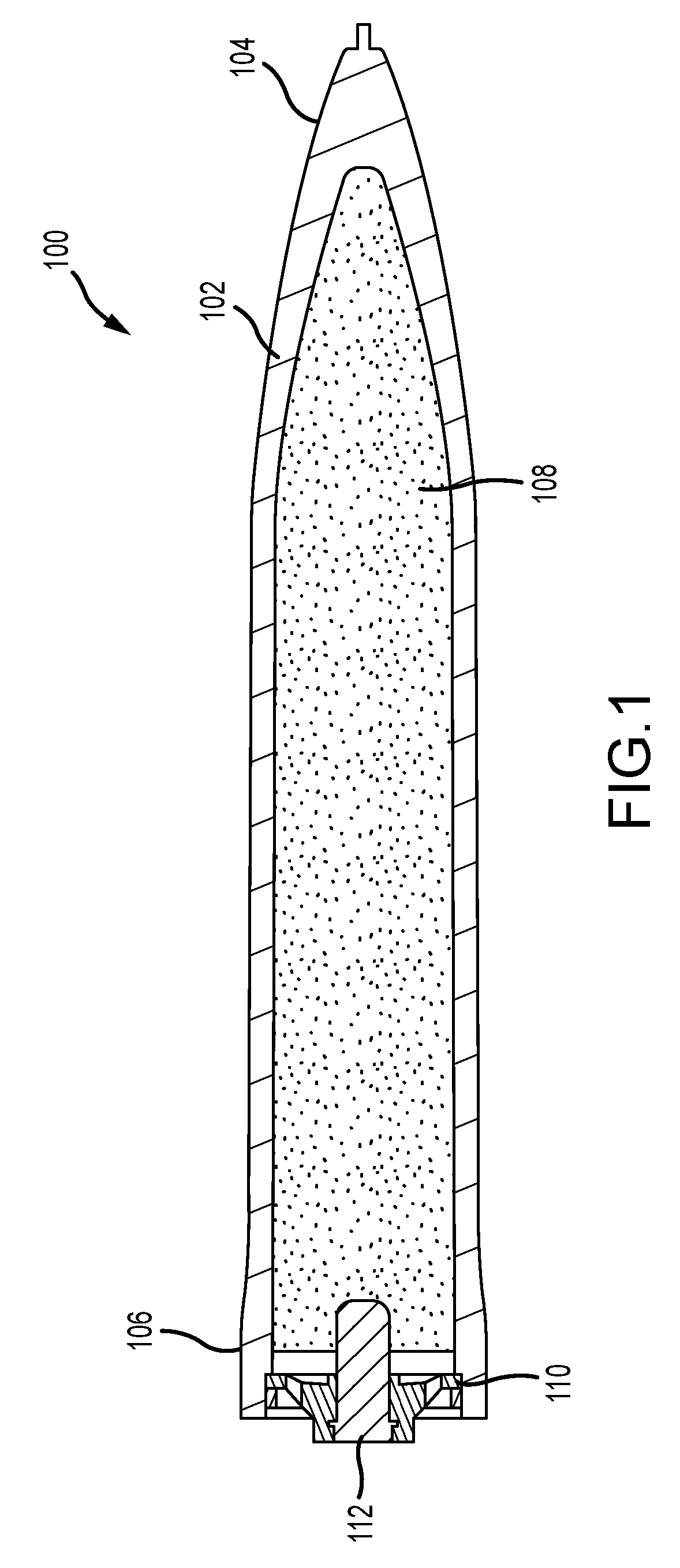Explosive ordnance cold assembly process
a technology of explosive ordnance and assembly process, which is applied in the direction of weapons, ammunition, weapon components, etc., can solve the problems of periodic cracks or voids, system failure, and tremendous dynamic stress on payloads, and achieve the effect of preventing condensation of moisture, facilitating relative movement, and deteriorating the explosive body
- Summary
- Abstract
- Description
- Claims
- Application Information
AI Technical Summary
Benefits of technology
Problems solved by technology
Method used
Image
Examples
Embodiment Construction
[0017]A first exemplary embodiment of a projectile 100 assembled in accordance with one embodiment of the process of the present disclosure is shown schematically in a longitudinal sectional view in FIG. 1. The projectile 100 has a hollow, generally tubular frangible projectile body 102 having a pointed closed nose 104 and an open rear 106. The projectile body 102 is typically made of a steel or other strong metal material and has a characteristic coefficient of thermal expansion (CTE) for that material.
[0018]The projectile body 102 contains an explosive charge body 108 such as a RDX, CDX or other explosive which may be in the form of a solid body or other form that is encapsulated in an solid enclosure such as a polyethylene liner so as to have a shape complementary to the internal shape or contour of the projectile body 102. The explosive charge body or package 108 as a whole also has a characteristic CTE because it will tend to expand or contract its outer dimensions with changes...
PUM
 Login to View More
Login to View More Abstract
Description
Claims
Application Information
 Login to View More
Login to View More - R&D
- Intellectual Property
- Life Sciences
- Materials
- Tech Scout
- Unparalleled Data Quality
- Higher Quality Content
- 60% Fewer Hallucinations
Browse by: Latest US Patents, China's latest patents, Technical Efficacy Thesaurus, Application Domain, Technology Topic, Popular Technical Reports.
© 2025 PatSnap. All rights reserved.Legal|Privacy policy|Modern Slavery Act Transparency Statement|Sitemap|About US| Contact US: help@patsnap.com



